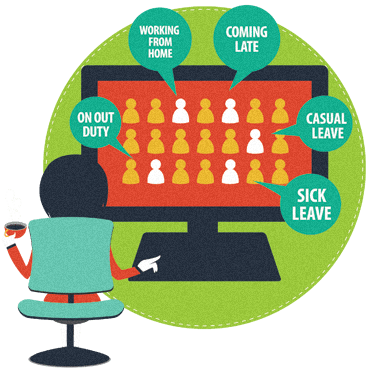
For an HR manager today, the most frequently sought employee discipline challenge is managing leave and excessive leave problems.
In a recent global leave survey among 800 organizations, 10 percent of those who responded, reported that leave abuse was their biggest problem.
10% does not sound like a lot, but to an HR manager who has little or no time, it means a lot.
What is an attendance problem?
- Failure to adhere to attendance rules
- Excessive unscheduled absences disrupting organizational efficiency and planned work
- Failure to schedule leave in advance time off
- Failure to contact the supervisor in unscheduled emergency situations
- Chronic tardiness or absence
- Misrepresentation of time-sheet entries
- Failure to furnish required medical documentation
What is a leave abuse problem?
- Using leave in situation that do not qualify for such use
- Suspicious employee attendance pattern
Excessive absenteeism can be costly for businesses in terms of both replacement costs and lost productivity. If not managed properly, chronic offenders can also be a source of frustration for those employees who generally do the right thing.
Six Steps You Should Adopt To Improve Employee Attendance
- Make Employees Aware of Expectations: Make sure employees are aware of attendance expectations and the effects of excessive absenteeism on the business including remaining team members, productivity and customer service. This sort of information should be made clear at an employee’s induction and reinforced through your employee manual, and code of conduct.
- Analyze Attendance Records: Analyze attendance records to clearly identify the extent of employee absence and any particular trends. For example, employees who seem to always be off on a Monday or a Friday or before or after a public holiday. There is no law against confronting an employee and asking for an explanation as to why their absences mostly seem to occur on particular days.
- Have a Clear Policy in Place: Have a clear policy and procedure that employees must follow if they are going to be absent. For example, you could state that employees make direct contact with a manager or someone in authority to advice of their absence, the nature of their illness and when they expect to return. Do not allow employees to just speak with the receptionist or send an email or text messages to a work colleague. If an employee is not genuine about being sick, they may think twice if they are required to speak directly with the boss.
- Follow Up With Employees Upon Their Return: Follow up with employees face to face when they return to work and enquire about their wellness and whether they are fit to resume normal duties. This lets the employee know that you are concerned about their well-being and that you have noticed their absence.
Before launching into disciplinary action, it makes good sense to speak with the employee concerned and try to uncover the root cause of the problem. This will allow you to determine some strategies to address the situation.
PeopleWorks Human Capital Management Software efficiently manages Employee Attendance and Leave. If you are already using a Biometric device, PeopleWorks HCM can be integrated with it. The Attendance and Leave module coordinates seamlessly with Payroll to input leave deductions and annual leave calculation. Project teams are communicated of a team member’s absence to help planning and productivity. We recommend HR Managers automate this simple yet time-consuming task to save your time and ensure error-free calculations. Contact us to know more.
